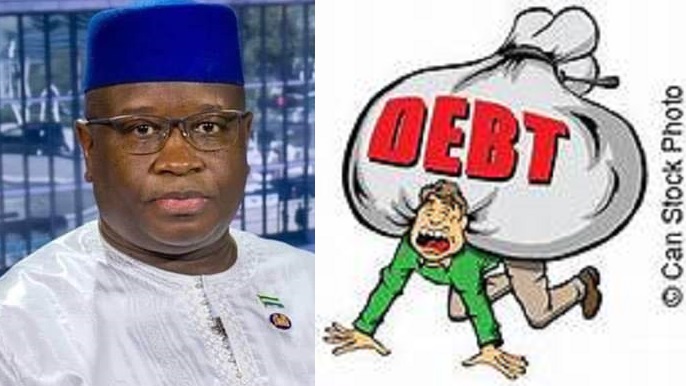The World Bank report on Sierra Leone titled Sierra Leone Economic Update released this week reveals the country public debt has risen steadily in recent years.
The report states that public debt has risen steadily in recent years to reach 76.9 percent of GDP in 2021, one of the highest levels of indebtedness in sub-Saharan Africa and the highest level in Sierra Leone since HIPC debt relief was obtained in 2008.
The increase in debt reflects persistent fiscal deficits, currency depreciation, and limited access to concessional sources of financing.
There is increasing reliance on high-cost domestic borrowing that has increased the debt servicing burden and crowded-out credit to the private sector.
The report reveals that the interest payments have been the fastest growing component of the budget and now surpass domestic spending on health.
According to preliminary Debt Sustainability Analysis by the IMF/WB the country is at high risk of debt distress. Public debt is believed to be sustainable provided that the authorities remain committed concessional financing and fiscal.
Despite this aspect the report reveals revenue collection has improved, in part thanks to tax administration reforms and one-off mining revenues.
Total domestic revenues, including both tax and non-tax receipts, increased to 16.1 percent of GDP during 2021, from 14.7 percent of GDP in the previous year. The resolution of a tax-dispute between SL Mining Company (Marampa mines) and the government resulted in a US$20 million (0.5 percent of GDP) one-time settlement in mining royalties.
Other sources of tax revenue also improved due to: (i) overall economic recovery; (ii) stricter enforcement of tax laws, and (iii) the automation of taxation processes, including roll-out of Electronic Cash Registers (ECRs) for the administration of goods and services tax (GST), and the Integrated Tax Administration System (ITAS) for the electronic registration, filing and payment of taxes. Expenditures are rigid and increased further during 2021, driven in part by inflationary overruns. Total expenditures stood at an estimated 26.6 percent of GDP.
Recurrent spending, which makes up almost two-thirds of total spending, increased by 0.6 percentage points to 18.3 percent of GDP due to higher wages and current transfers. Of total recurrent spending, nearly two-thirds are committed in the form of wages and salaries and interest payments.
Overall, a combination high inflation and the need to preserve essential health and education services constrained expenditure consolidation. Capital expenditure fell marginally to 7.5 percent of GDP in 2021 but remained higher than its pre-COVID-19 level (5.7 percent of GDP) reflecting the government’s drive to improve rural connectivity as part of its pandemic response program caused by the war in Ukraine but will decline gradually to single digits as domestic food production increases by 2024 and offsets the effect of high international prices.
The current account deficit is expected to remain large, narrowing marginally to 13.1 percent of GDP by 2024 as strong import demand offsets the recovery of mining sector exports.
The fiscal deficit is expected to exceed the budgeted target in 2022 due to higher than anticipated inflation and a rise in subsidies but projected to narrow to 2.9 percent of GDP by 2024, driven by gains in domestic revenue mobilization, expenditure rationalization, and public financial management reforms.



 Post a comment
Post a comment 









